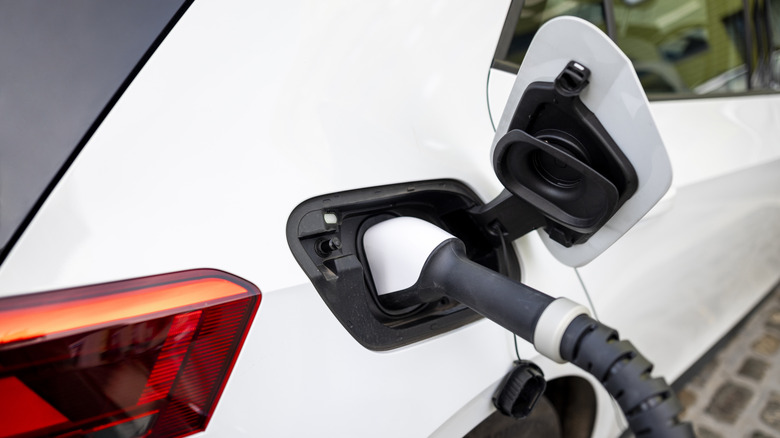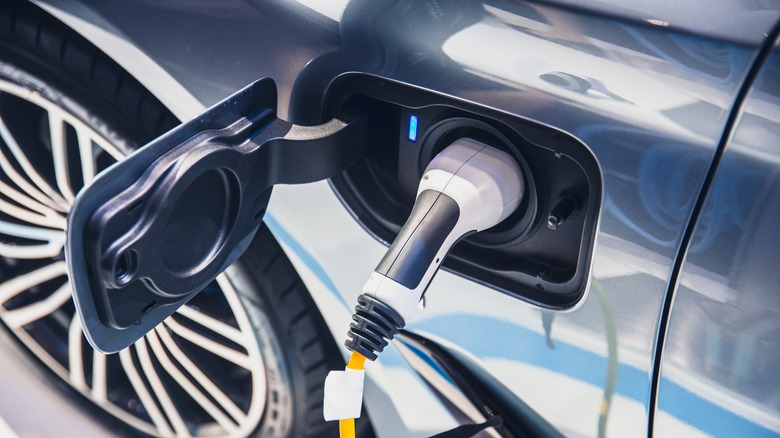What Is Plug & Charge, And How Does It Affect Public EV Charging?
If you're an EV owner who doesn't drive a Tesla or have access to the Supercharger network like Ford owners, chances are you've had to swipe your card at some point when using a public charging station. Setting up different accounts and payment details for the litany of charging networks out there can get pretty tedious. A public charging-centric technology called Plug and Charge seeks to eliminate that headache and make paying for charging more secure and convenient.
The Plug and Charge tech dictates that once you pull up to an EV charger and plug in, it automatically starts charging without the driver needing to jump through any extra hoops. The driver is then automatically billed to an account that's set up through the specific automaker of the driver's car. Both the car and charger need to be compatible for Plug and Charge to work. The communication between the EV and the charger is encrypted through the International Organization for Standardization document ISO 15188. That ensures automakers and charging networks utilizing Plug and Charge are on the same page when it comes to information security.
Ironing out the EV charging wrinkles
It's worth noting that Plug and Charge is not a future plan. It's already in operation across a variety of automakers and charging networks. It has not, however, been standardized across the entirety of the automotive industry or every charging network.
Plug and Charge tech helps EVs inch closer and closer to normalization and widespread adoption. If implemented throughout the industry, it would iron out yet another big wrinkle of charging inconvenience that's unfortunately prevalent in the EV ecosystem – something that caused us problems in our review of the Ford Mustang Mach-E. You don't have to make sure your car is compatible with a gas pump before you swipe your card and fill the tank up with fuel. The same should be said about charging EVs, but that's not always the case with charging networks and vehicles not supporting the Plug and Charge standard.
Tesla Superchargers function in much of the same way, but that's one of the benefits of using a network only designed for certain EVs; the system is not standardized. Plug and Play's bidirectional communication standard is brand and automaker-agnostic and ensures that charging is a stress-free process and you can get back on the road quicker.

